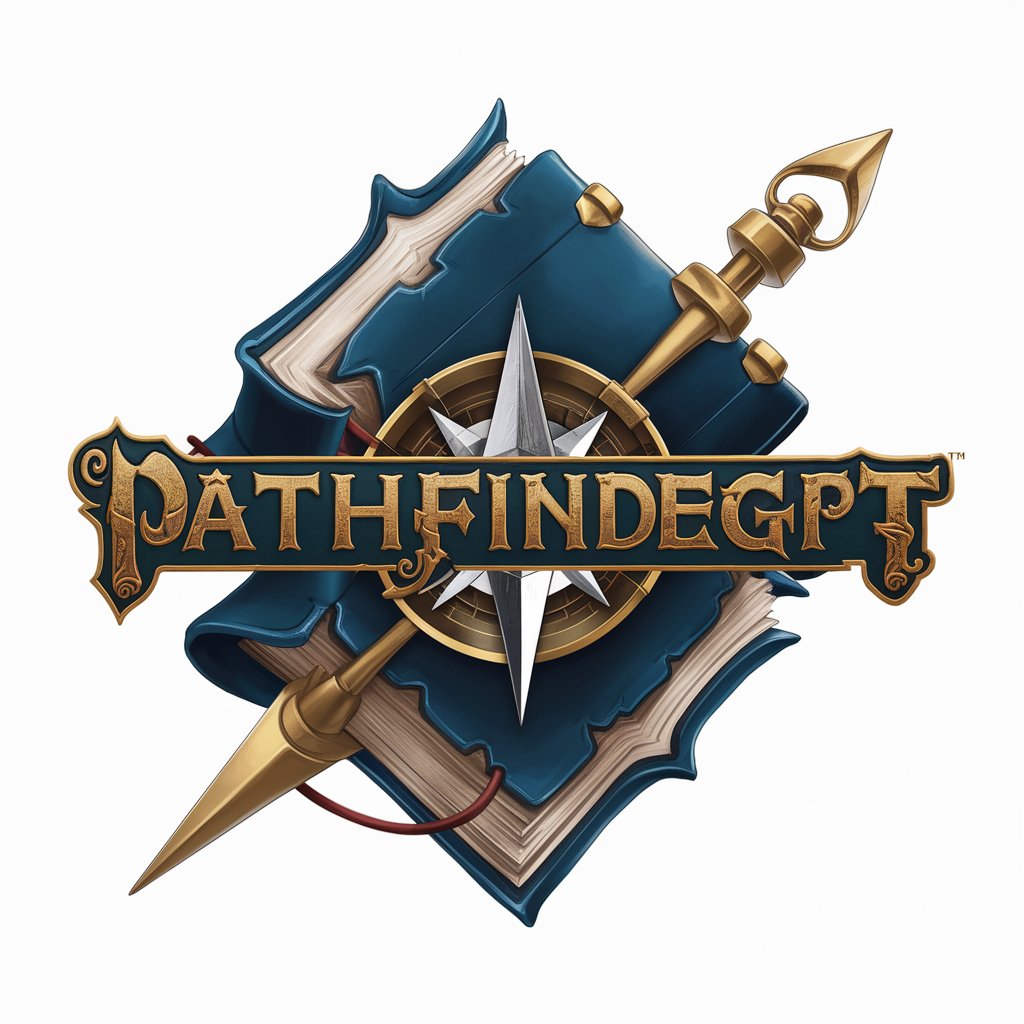Pathfinder RPG Rules - Pathfinder RPG Rule Navigation

Hello! How can I assist you with Pathfinder 2e rules today?
Simplify Pathfinder 2e with AI
How does the spell 'Fireball' work in Pathfinder 2e?
Can you explain the rules for flanking in Pathfinder 2e?
What are the conditions for a successful sneak attack in Pathfinder 2e?
How do you calculate armor class (AC) in Pathfinder 2e?
Get Embed Code
Pathfinder RPG Rules: An Overview
Pathfinder RPG Rules are designed to provide comprehensive and detailed guidance for playing the Pathfinder 2nd Edition role-playing game. This system encompasses a wide range of rules, from character creation and combat mechanics to magic, gear, and the myriad of actions a character can take during their adventures. The primary design purpose of Pathfinder RPG Rules is to facilitate a structured, yet flexible framework for storytelling and gameplay within a fantasy setting. For example, when creating a character, players must consider races (Ancestries), classes, skills, and feats, each offering unique options and paths for character development. During gameplay, these rules govern everything from negotiating with NPCs to epic battles with dragons, ensuring fairness and excitement for all participants. Powered by ChatGPT-4o。

Core Functions of Pathfinder RPG Rules
Character Creation and Development
Example
A player creates a Dwarven Fighter, choosing specific feats and skills based on their desired role in the party, such as a frontline combatant or a tactical defender.
Scenario
During character progression, the player selects advanced feats and equipment that align with evolving campaign challenges, demonstrating the depth of customization and growth.
Combat Mechanics
Example
A party of adventurers engages in combat with a group of goblins. The rules provide a turn-based system, detailing actions like attacks, spells, and movements, ensuring strategic depth and tactical decision-making.
Scenario
In a particularly challenging encounter, players must utilize the environment, positioning, and their abilities in synergy to overcome their foes, showcasing the tactical versatility of the combat system.
Magic System
Example
A wizard character casts a fireball spell, requiring an understanding of spell slots, ranges, areas of effect, and saving throws, illustrating the complexity and potential of the magic system.
Scenario
The party faces a powerful magical creature. The wizard must choose spells wisely, considering resistance, area damage, and strategic benefits, highlighting the strategic depth of magical encounters.
Who Benefits from Pathfinder RPG Rules
Tabletop RPG Players
Individuals or groups looking for a structured yet flexible system for fantasy role-playing. They benefit from the depth of character customization, rich lore, and tactical gameplay.
Game Masters
Those who facilitate the game, creating adventures and challenges. They utilize the rules to craft engaging stories, manage encounters, and ensure a balanced and immersive experience for players.
Fantasy Writers and Creatives
Writers or creators seeking inspiration for fantasy worlds, characters, and plots. The comprehensive ruleset offers a wealth of ideas for constructing detailed and believable fantasy settings.

How to Use Pathfinder RPG Rules
1
Start your journey by visiting a platform offering Pathfinder 2e rules, ensuring access is free and does not require a subscription.
2
Familiarize yourself with the Pathfinder 2e core rulebook's structure, including chapters on character creation, skills, spells, equipment, and combat.
3
Use the search function to find specific rules or topics. This could include rules on combat actions, spell effects, or character leveling.
4
Engage in community forums or discussion groups to ask questions or share insights about complex rules or interpretations.
5
Practice by creating characters or running short game sessions to apply the rules in practical scenarios, enhancing understanding and retention.
Try other advanced and practical GPTs
Nursenurse
Empowering your health journey with AI.

Virtual Boardroom GPT
Harness collective AI wisdom for strategic decisions.

REX Mentor
Empowering Continuous Improvement with AI

MilaexGPT
Empowering your crypto journey with AI

Cybersecurity AI Synapse Autogen BOT
Empowering Cybersecurity Insight with AI

FilmReplicaGPT
Bringing movie lines to your conversation.

01 企画AI
Empowering planning with AI insights.

SpellCheckGPT
Enhance Your Writing with AI

HasidicGPT
Bringing Hasidic Wisdom & Humor to AI

Sleepy Head
Bringing Stories to Life with AI

SecretaryGPT
Streamline meetings with AI-powered secretarial support.

تحدث مع القرءان

Pathfinder RPG Rules Q&A
How do I calculate attack bonuses in Pathfinder 2e?
Attack bonuses in Pathfinder 2e are calculated by adding your character's proficiency bonus for the weapon or attack type, their ability modifier relevant to the attack (Strength for melee attacks, Dexterity for ranged attacks), and any other applicable bonuses or penalties.
What are the steps for character creation?
Character creation involves selecting a race (ancestry), choosing a class, determining ability scores, picking skills, deciding on feats, and equipping your character. Each choice influences your character's abilities, strengths, and weaknesses.
How does spellcasting work?
Spellcasting requires selecting spells during character creation or leveling up. Casters must have the spell in their repertoire or spellbook, and it consumes a spell slot of the appropriate level. Some spells require a spell attack roll or allow the target a saving throw to mitigate effects.
Can you explain the action economy in combat?
In combat, each character receives three actions per turn, which can be used for movements, attacks, casting spells, and other special actions. Additionally, characters have one reaction they can use for specific abilities or responses outside their turn.
What is the difference between a skill check and a saving throw?
A skill check is used when a character actively attempts to perform a task or action, while a saving throw is a reactive measure to resist or mitigate a harmful effect, such as a spell or trap.
